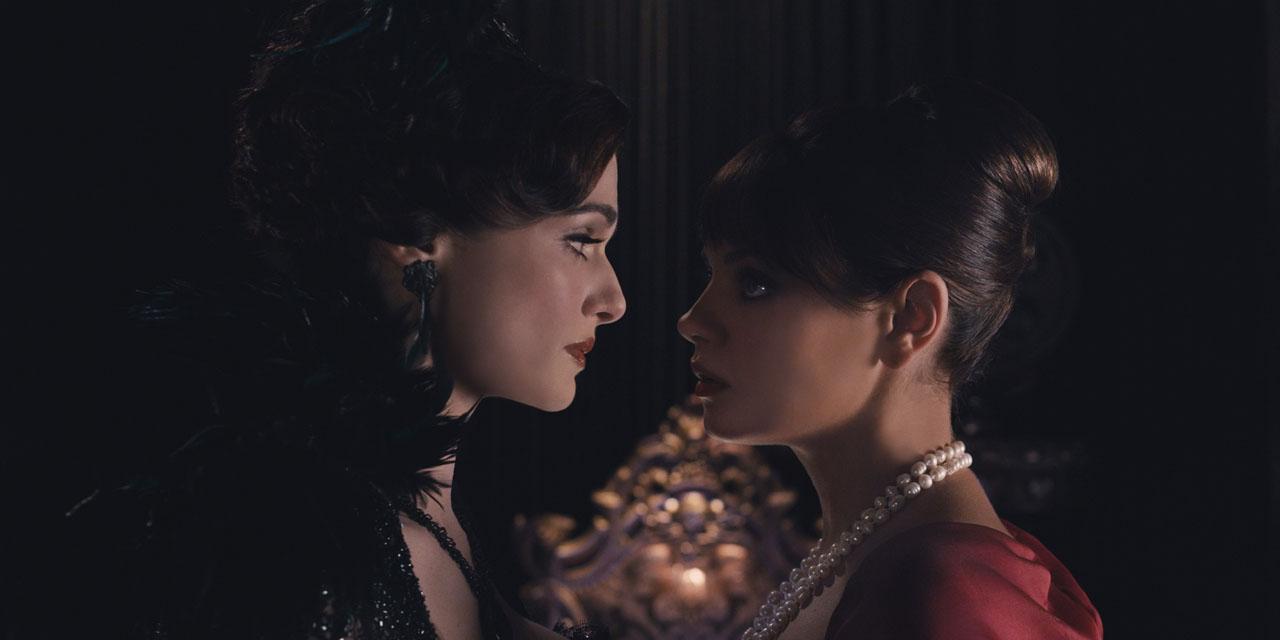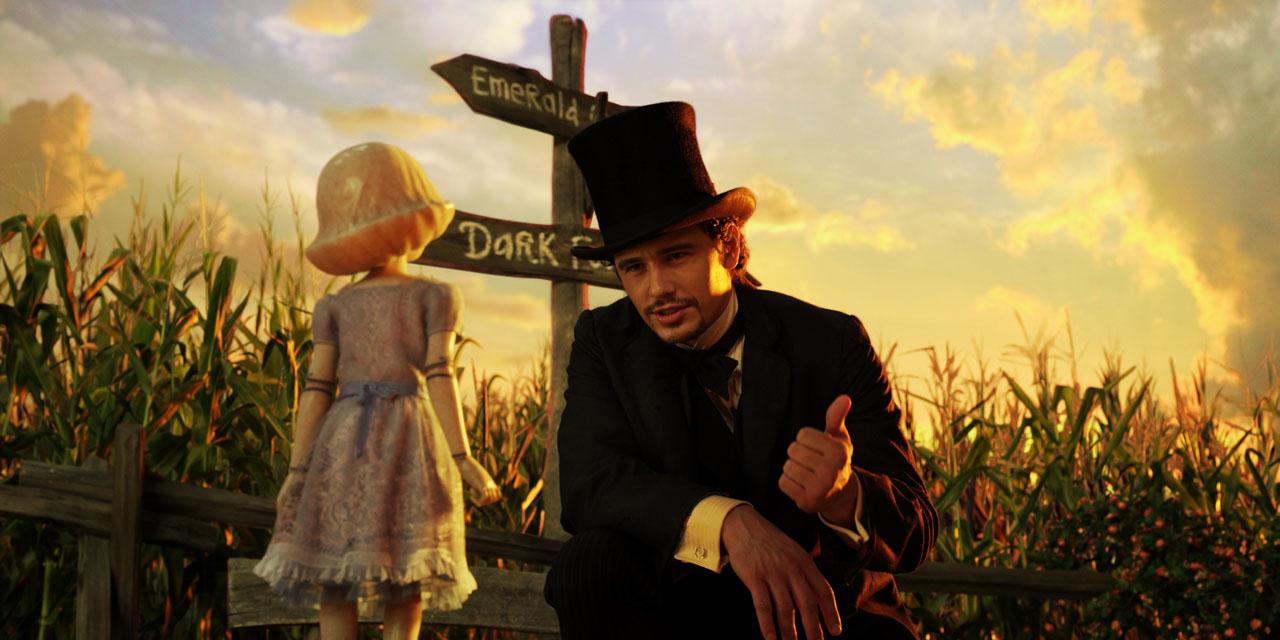 The problem with prequels is that they are locked into their endings. Directors may have lots of fun playing with the various toys in the toybox, but they have to make sure that they are all packed away in their proper place and with nothing broken when done. The best that they can do is make sure the journey the film’s characters take is at least exciting and distracting enough so we don’t notice that everything is lacking in overall suspense as to how it will all end.
The problem with prequels is that they are locked into their endings. Directors may have lots of fun playing with the various toys in the toybox, but they have to make sure that they are all packed away in their proper place and with nothing broken when done. The best that they can do is make sure the journey the film’s characters take is at least exciting and distracting enough so we don’t notice that everything is lacking in overall suspense as to how it will all end.
And such is the problem director Sam Raimi finds himself with with the film Oz, The Great And Powerful. As a prequel to L. Frank Baum’s classic children’s book The Wonderful Wizard Of Oz, and to a lesser and non-legal extenant MGM’s 1939 musical adaptation of the same, we know that by the end Kansas circus magician Oscar Diggs (James Franco) will be ensconced in the Emerald City as the ruler of the Land of Oz after having incurred the wrath of an evil witch or two. And while Mitchell Kapner and David Lindsay-Abaire’s screenplay does managed to supply some nice character moments and some fun set pieces, it never really brings one to the edge of one’s seat.
Oscar Diggs, Oz to his friends, aspires to greatness but has doubts that he could ever achieve it. But when his twister-tossed hot air balloon sends him to the land OZ where he is greeted by the witches Theodora (Mila Kunis) and Evanora (Rachel Weisz) as the foretold future king of the realm, he sees his prospects changing. All he has to do, he is told by Theodora and Evanora, is kill the evil witch who poisoned the previous ruler of the land – Glinda (Michelle Williams).
 If you’re familiar at all with the original Wizard Of Oz story than you know that someone is lying about Glinda being a killer and to its credit that movie doesn’t draw out for too long the not-so-mysterious mystery as to whom the real culprit is. What’s more interesting about the film’s screenplay is the repercussions of Oz’s flirtatious nature with one of the sisters and how the other uses it to her advantage. It is an almost Shakespearean turn of events, only undercut by the fact that the actress doesn’t really play it all that well. (I’m not saying whom it is in order to preserve the mystery as to which sister it is.)
If you’re familiar at all with the original Wizard Of Oz story than you know that someone is lying about Glinda being a killer and to its credit that movie doesn’t draw out for too long the not-so-mysterious mystery as to whom the real culprit is. What’s more interesting about the film’s screenplay is the repercussions of Oz’s flirtatious nature with one of the sisters and how the other uses it to her advantage. It is an almost Shakespearean turn of events, only undercut by the fact that the actress doesn’t really play it all that well. (I’m not saying whom it is in order to preserve the mystery as to which sister it is.)
If you’re familiar with Raimi’s work in the Evil Dead horror films or even the Spider-Man trilogy and are wondering about how he came to direct a family film for Disney, don’t fret. He still manages to work in a number of his trademarks including some dutch camera angles and frenetic action sequences. Of course, his best friend, cult actor Bruce Campbell, gets a cameo late in the film that is well worth the wait. And if you look a little harder at the story, you’ll realize that in broad strokes it bears a striking similarity to his own film Army Of Darkness. The third installment of the Evil Dead franchise finds its hero thrown back in time where he is greeted as a prophesied savior who will defeat an evil magic and manages to do so with knowledge of technology that the native population does not have. (OK, these are both variations of Mark Twain’s A Connecticut Yankee In King Arthur’s Court, but the comparison still stands.)
Since this is a Disney production, legalities insist that Raimi and company don’t copy things that are intrinsically unique to the classic 1939 MGM The Wizard Of oz. But boy do they dance right on the line of what they can and can not get away with doing. Many of the character and set designs look similar to their 1939 counterparts, though I suppose an argument could be made that they are both based on the initial descriptions provided by Baum in the books. The film even manages a meta-textual joke about their limitations in duplicating elements from the MGM film in the scene where Oz first meets the munchinkins.
 Even right at the start of things, the film apes the 1939 film’s black and white to color transition that marked Dorothy’s leaving of the mundane world of Kansas and arriving somewhere over the rainbow. But Raimi does things one better by shooting his Kansas sequence in Academy ratio that opens up to wide screen as the color seeps in upon Oz’s arrival in the magical land that bears his name. (Surprisingly, though, this would have been a great moment for the film to transition from 2D to 3D, but the opportunity is allowed to slide past.)
Even right at the start of things, the film apes the 1939 film’s black and white to color transition that marked Dorothy’s leaving of the mundane world of Kansas and arriving somewhere over the rainbow. But Raimi does things one better by shooting his Kansas sequence in Academy ratio that opens up to wide screen as the color seeps in upon Oz’s arrival in the magical land that bears his name. (Surprisingly, though, this would have been a great moment for the film to transition from 2D to 3D, but the opportunity is allowed to slide past.)
And speaking of the 3D, Raimi manages to take the process and make it feel not so much as something he was forced to use in order to jack up the prices at the ticket booth but make it fun at times. And given that we know that all four main characters will have to survive in order to meet their respective fates in The Wizard Of Oz (bucket of water, farmhouse to the top of the head, etc.), that’s about all we can ask for.


